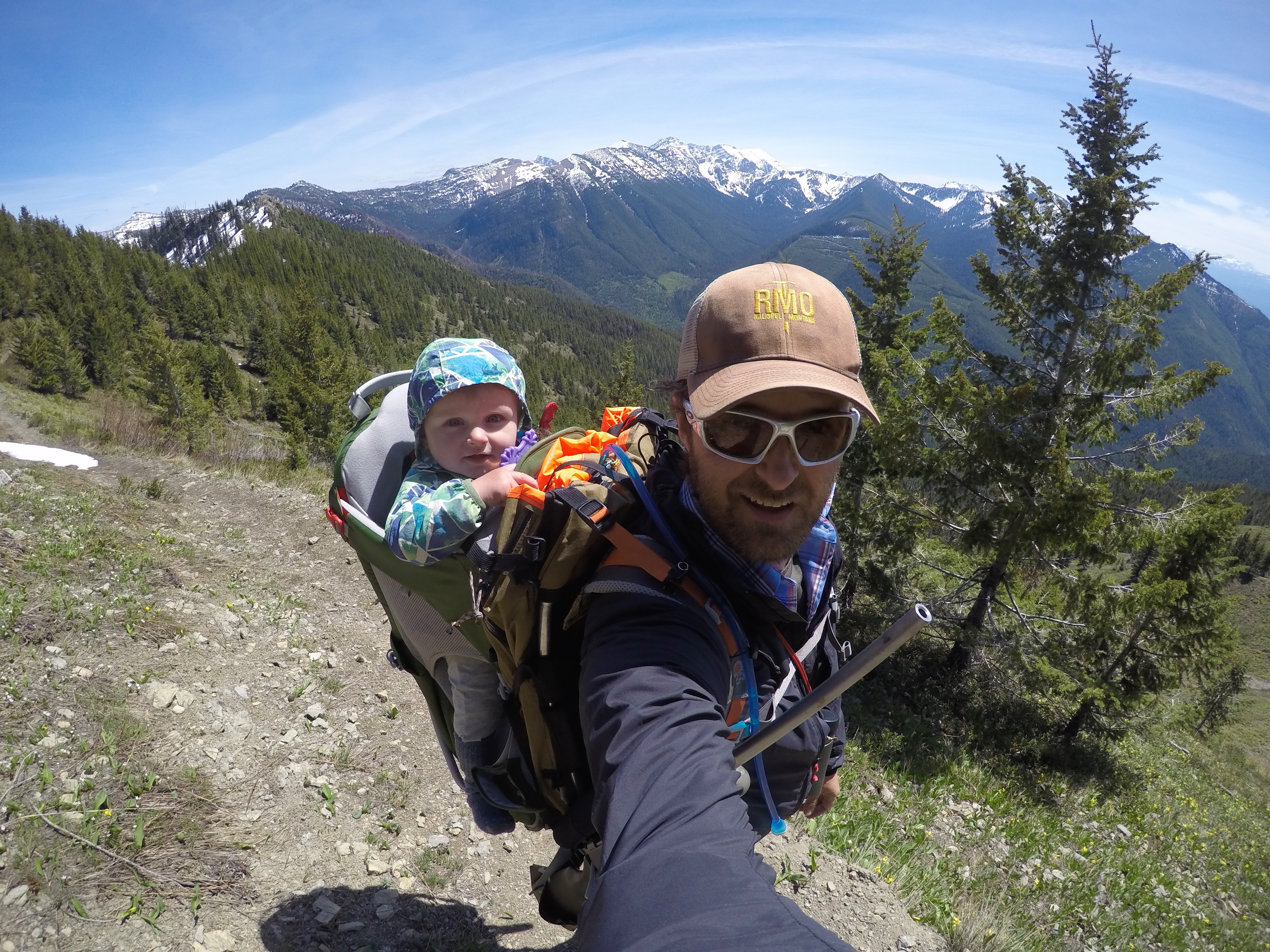
Seek Outside doesn’t actually make that many packs, but for those who’ve never seen one getting acquainted with the options and choosing well can be daunting. I’ve put serious miles on a Unaweep, Evolution, and Revolution, and am accumulating miles on the new Divide 4500, so I like to think I have something to offer here, beyond this product page and this video:
First; fabrics. Alpine Gray is X21 from Dimension Polyant and suitable for everything which doesn’t involve substantial point abrasion or regularly carrying heavy sharp things. Expedition Olive is X42, which stands up to everything but the most egregious abuse. Guide Slate is X51, a 500/1000 denier plain weave, and when it comes to things like being drug against rocks adds quite a bit of durability compared to X42. X33 is lighter and nearly as tough as X42, but available only in multicam. X21 is the choice for all but the most abusive backpacker, and for hunters who are easy on gear. X33 is a good upgrade over X21 for anyone who doesn’t mind the camo. X42 is a great middle ground for off-trail backpacking, light canyoneering, carrying skis, and so forth. X51 is for intensive canyoneering or other applications where hauling, dragging, and scraping your pack will be commonplace.
Second, frame height. Depending on pack weight and personal preference there is a range of acceptable heights, depending on user torso length. The various packs are “optimized” for a given height, which simply means that number is the distance from the pack base to the top of the frame pockets. On the Divide, for example, this is 24 inches, but a frame nearly 2 inches taller can be used with no issue. I have a 21 inch torso, and the 24 inch frame gives me good lift from the load lifters up to 40-50 pounds, but in the last few months I’ve taken to running 1.25 inch extensions in the Divide all the time. This places the frame barely below the bottom of the bag (it still stands by itself when fully loaded), and gives me enough lift for almost any load I might carry. As a rule of thumb, those carrying light loads and who prefer a frame not far above their shoulders will do well with a frame 3-4 inches taller than their torso length. 5 inches taller is a good all-around length, and 7-8 or more inches taller is the way to go for serious load hauling.
In the top photo I’m running the Osprey Poco kid carrier lashed to the Revolution frame at 28 inches, which for that awkward load is ideal. Contrast that with the Divide at 25.25 inches, below. Exact adjustments to frame height are easy to achieve by ordering the frame extensions and cutting them with a hacksaw or pipe cutter.

Frame height will drive pack selection, to a limited extent. The very long-torsoed will find the Divide a poor fit, for example. Similarly the Exposure, which due to the zipper cannot be compressed shorter than the 26 inch ideal frame height, may be a bit taller than the shortest-torsoed will find ideal.
Beyond that desired features tell the story. The integrated bags (Unaweep, Exposure, and Divide) are lighter, cheaper and simpler, but less versatile, than the Revolution frame and the various bags. If you want the lightest pack possible, know you’ll only want one pack, and won’t need the cargo hauling ability of the Revolution frame, the Divide is for me the pack to get. The features and especially tapered bag are fantastically versatile, and if you need extra capacity or the occasion ability to haul big, awkward stuff the rolltop straps and normal compression straps can be used to run a Talon compression panel. On the other hand, the Revolution frame works exceptionally well for carrying awkward loads, and the individual bags are cheaper than Unaweep bags.
In summary:
- Backpackers, multisport folks, and hunters wanting the lightest possible pack should get the Divide.
- Very tall versions of the above, as well as hunters and people who will be carrying awkward things on a semi-regular basis should get the Unaweep.
- Organizationally challenged backpackers should get a Unaweep with side-zip, or the Exposure.
- Hunters who prefer to haul meat between the frame and the bag should get a Revolution/Fortress combo in whatever size will suit. Ditto for backpackers who might find themselves hauling stuff like tools for trail work, inflatable kayaks, biological research gear, or a waders/Watermaster fishing rig should do the same.
- Organizationally challenged versions of the above should get a side zip, or even better, a Precipice bag.
I’ve gotten all my Seek Outside packs for free, but I think my enthusiasm for them in as unbiased as is reasonable to ask. As I responded yesterday, to one of the many folks asking about the Divide for backpacking: “The association between Seek Outside and hunting is understandable, but I don’t see anything about the suspension itself which is anything other than ideally suited to hiking. Lumbar pad packs like the Catalyst which are designed for (by hunting standards) light loads can themselves be fairly light because sag and compression within the belt/stay/user interface is not a huge concern. Take a lumbar pad pack designed for 60+ pounds (Kifaru, old Dana Designs) and shit has to get heavy to fight said sag. The Seek Outside suspension is just a simpler and better design. Only place for sag/compression is the webbing between the belt and frame (non-issue) and the padding in the belt itself. The only way to make the package hiking specific is with a lighter frame (now available) and a lighter belt (the 2-3 oz of savings prob not worth the added production complication. In short, buying a pack capable of hauling 100+ pounds is deceptive; you’re not giving anything up or adding anything superfluous to have it.”
Leave a comment